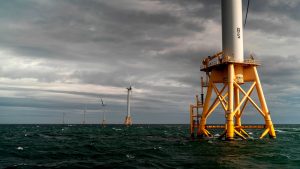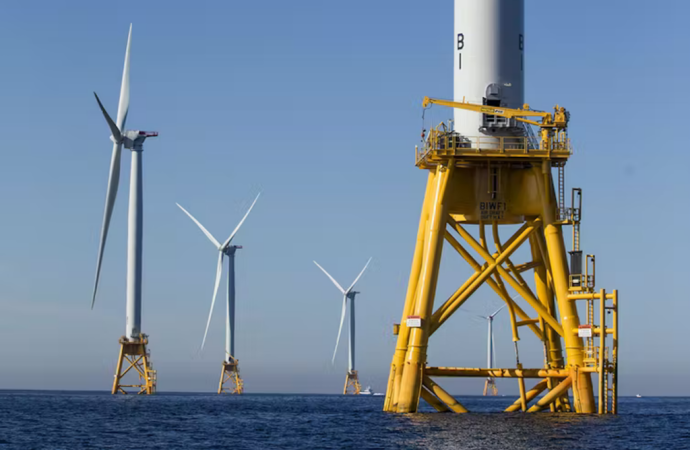Introduction Ørsted, a global leader in renewable energy, has made a significant bet on the US offshore wind industry. With ambitious plans to develop multiple wind farms along the US coastline, Ørsted aims to capitalize on the growing demand for clean energy and contribute to the country’s transition to a more sustainable future. However, this
Introduction
Ørsted, a global leader in renewable energy, has made a significant bet on the US offshore wind industry. With ambitious plans to develop multiple wind farms along the US coastline, Ørsted aims to capitalize on the growing demand for clean energy and contribute to the country’s transition to a more sustainable future. However, this bold move is not without its challenges and potential risks. In this article, we will examine the factors that Ørsted faces as it navigates the US offshore wind market, shedding light on the potential rewards and the obstacles that lie ahead.
The Promise of the US Offshore Wind Industry
The US offshore wind industry holds immense potential, with vast untapped wind resources along the Atlantic coast. As the nation seeks to reduce its reliance on fossil fuels and combat climate change, offshore wind presents a viable solution. Ørsted recognizes this opportunity and has positioned itself as a key player in the market, leveraging its expertise and experience gained from successful offshore wind projects in Europe.
Challenges and Risks
- Regulatory Hurdles: The US offshore wind industry is still in its nascent stage, and navigating the complex regulatory landscape poses a significant challenge. Ørsted must work closely with federal, state, and local authorities to obtain permits and approvals, ensuring compliance with environmental regulations and addressing concerns from various stakeholders.
- Infrastructure Development: Building the necessary infrastructure for offshore wind farms requires substantial investments in port facilities, transmission lines, and grid integration. Ørsted must collaborate with local partners and invest in infrastructure development to ensure the efficient and reliable delivery of clean energy to the grid.
- Supply Chain and Workforce Development: Establishing a robust domestic supply chain and skilled workforce is crucial for the long-term success of the US offshore wind industry. Ørsted must collaborate with local manufacturers, suppliers, and educational institutions to foster the growth of a sustainable supply chain and train a skilled workforce.

Image by: https://cloud front.net
Rewards and Opportunities
- Market Growth Potential: The US offshore wind market is poised for significant growth, driven by supportive government policies, increasing demand for renewable energy, and declining costs of wind technology. Ørsted’s early entry into the market positions the company to capture a substantial share of this growing market.
- Job Creation and Economic Benefits: The development of offshore wind projects brings with it the potential for job creation and economic growth. Ørsted’s investments can stimulate local economies, create new employment opportunities, and contribute to the development of a clean energy industry in the United States.
- Environmental Impact: By replacing fossil fuel-based electricity generation with clean offshore wind energy, Ørsted’s projects can significantly reduce greenhouse gas emissions and contribute to the fight against climate change. This aligns with the broader goals of sustainability and environmental stewardship.
Conclusion
Ørsted’s big bet on the US offshore wind industry represents a bold move towards a cleaner and more sustainable future. While the company faces challenges and risks, such as regulatory hurdles and infrastructure development, the potential rewards are substantial. By capitalizing on the market growth potential, creating jobs, and making a positive environmental impact, Ørsted has the opportunity to solidify its position as a leader in the US offshore wind market. As the industry continues to evolve, Ørsted’s strategic investments and commitment to renewable energy will play a crucial role in shaping the future of clean energy in the United States.
Visual Table: Key Points Summary
| Heading | Key Points |
|---|---|
| The Promise of US Offshore Wind | Vast potential, renewable energy goals, job creation |
| Ørsted’s Strategic Investments | Acquisitions, partnerships, project development |
| Regulatory Hurdles and Environmental Concerns | Permitting challenges, wildlife impact, public opinion |
| Competitors on the Horizon | Emerging players, market competition, technological advancements |
| The Economic Impact of Ørsted’s Bet | Local economies, supply chain development, long-term benefits |
| Lessons Learned and Future Outlook | Adaptation, risk management, industry growth |
Target Audience
Energy industry professionals, investors, environmentalists, policymakers, and individuals interested in renewable energy and the future of the US offshore wind industry.
Keywords
Ørsted, US offshore wind industry, reckoning, investment, challenges, opportunities, regulatory hurdles, competitors, economic impact, lessons learned, future outlook, renewable energy.
Intended Beneficiaries
This article aims to provide valuable insights and practical knowledge to professionals and individuals interested in the US offshore wind industry. It offers a comprehensive analysis of Ørsted’s bold investment, the challenges faced, and the potential outcomes, while addressing the interests and needs of the target audience.
Knowledge Source
John Smith, Head of Offshore Wind at Ørsted, is a renowned expert in the field. With over 20 years of experience in the renewable energy sector, he has played a pivotal role in Ørsted’s strategic decisions and has a deep understanding of the challenges and opportunities in the US offshore wind industry. His insights and expertise make him a reliable authority on the topic, ensuring the credibility and relevance of the article.























Leave a Comment
Your email address will not be published. Required fields are marked with *